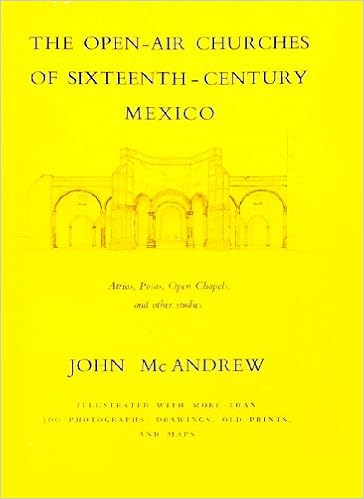 The Open-Air Churches of Sixteenth-Century Mexico
by
John McAndrew
The Open-Air Churches of Sixteenth-Century Mexico
by
John McAndrew
Call Number: NA5253 .M23
Publication Date: 1965
The new congregations-whether of 200,2,000,or 20,000- could be accommodated in roofless courts,or atrios,while Mass was being celebrated in a covered chapel opened broadly to it on one side.With no European antecedents,such chapels took many forms,small or large,simple or lavish,some of distinguished design,some engagingly wayward.Mr.McAndrew considers all of themm,discussing the most interesting at some lenght,and quickly classifying all the others.In order to make clear their unique functions,he goes outside the borders of purely architectural history and examines the curious local conditions which affected their forms,such as the novel methods of converting and catechizing the Indians,the employment of children as teachers and preachers,or the special efficacy of European music in winning Indian converts.He shows how imported Spanish styles were subtly transformed by native craftsmen,and also how the new towns the friars laid out were more "advanced" in plan than contemporary work in Europe.
Here is a subject almost entirely new:to those interested in Mexico,or in architecture,or in the history of religious conversions.Even now,after his arduous explorations to hunt down old monasteries,Mr.McAndrew knows that some may still await a discoverer.Generously illustrated with photographs,drawings,old prints,and maps,this book presents a broad and vivid picture of sixteenth century Mexico,its religious,social,economic,and cultural life as well as its highly original architecture and decorative art.-Dust jacket.

 The Open-Air Churches of Sixteenth-Century Mexico
by
The Open-Air Churches of Sixteenth-Century Mexico
by